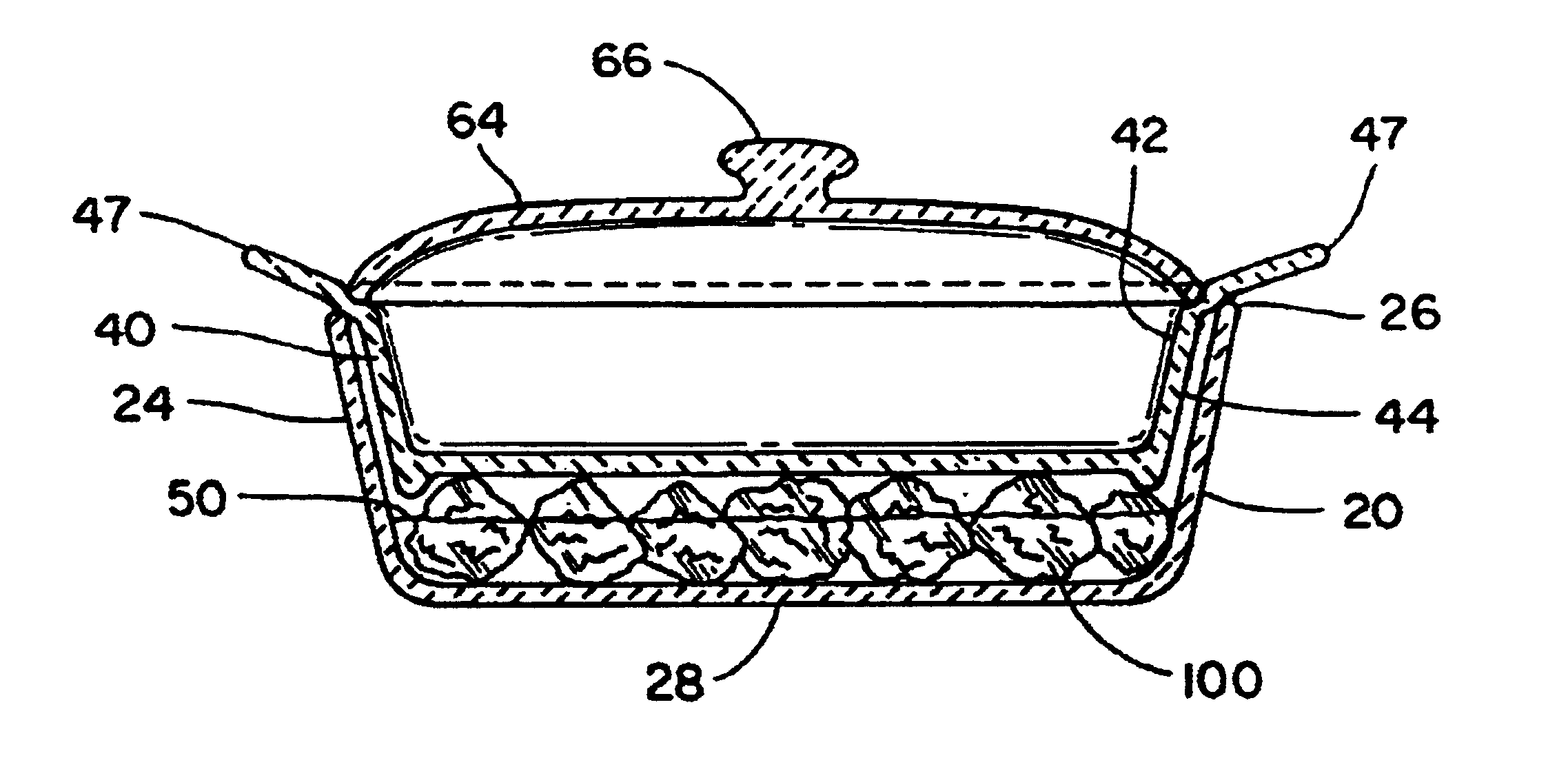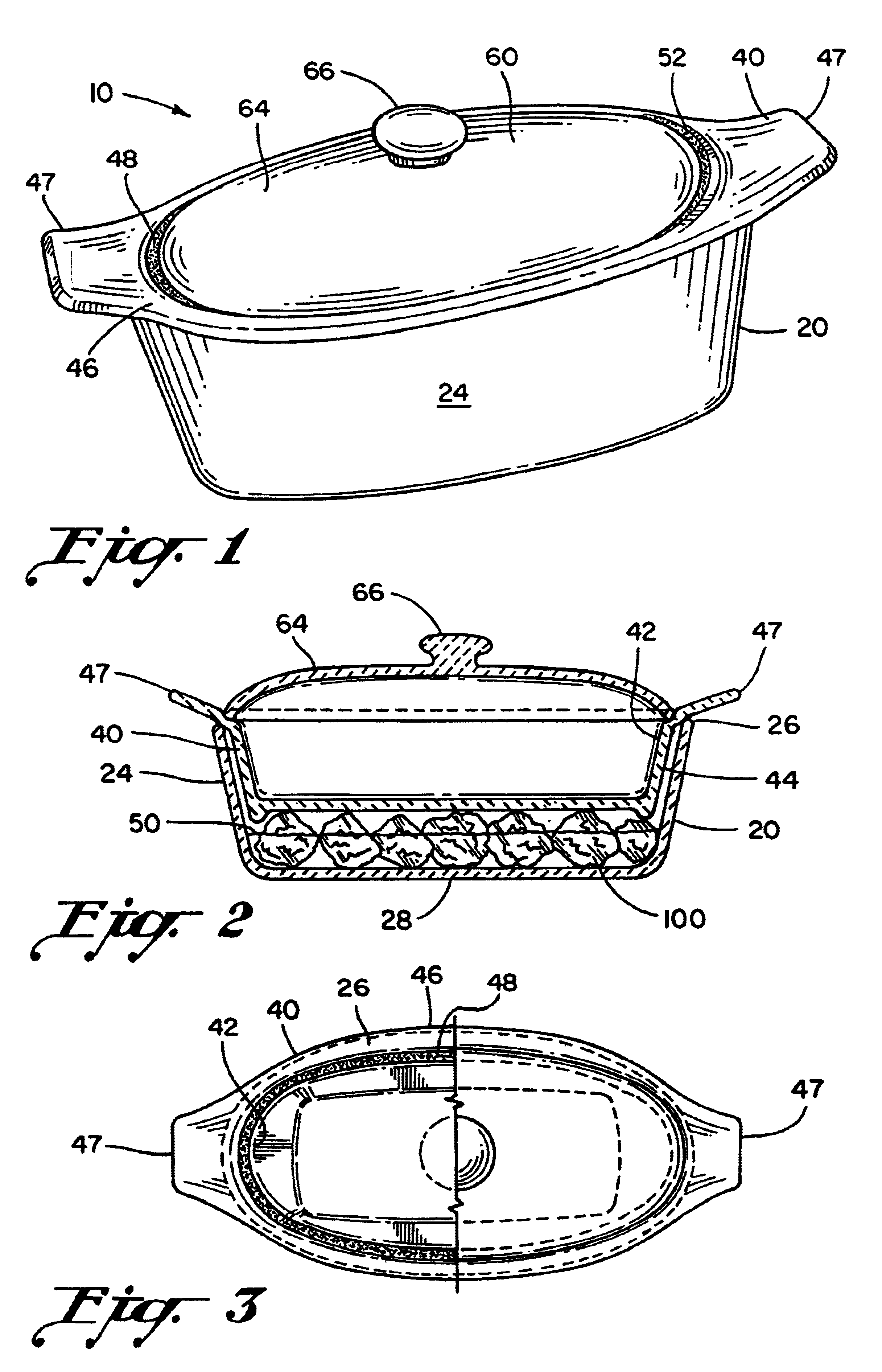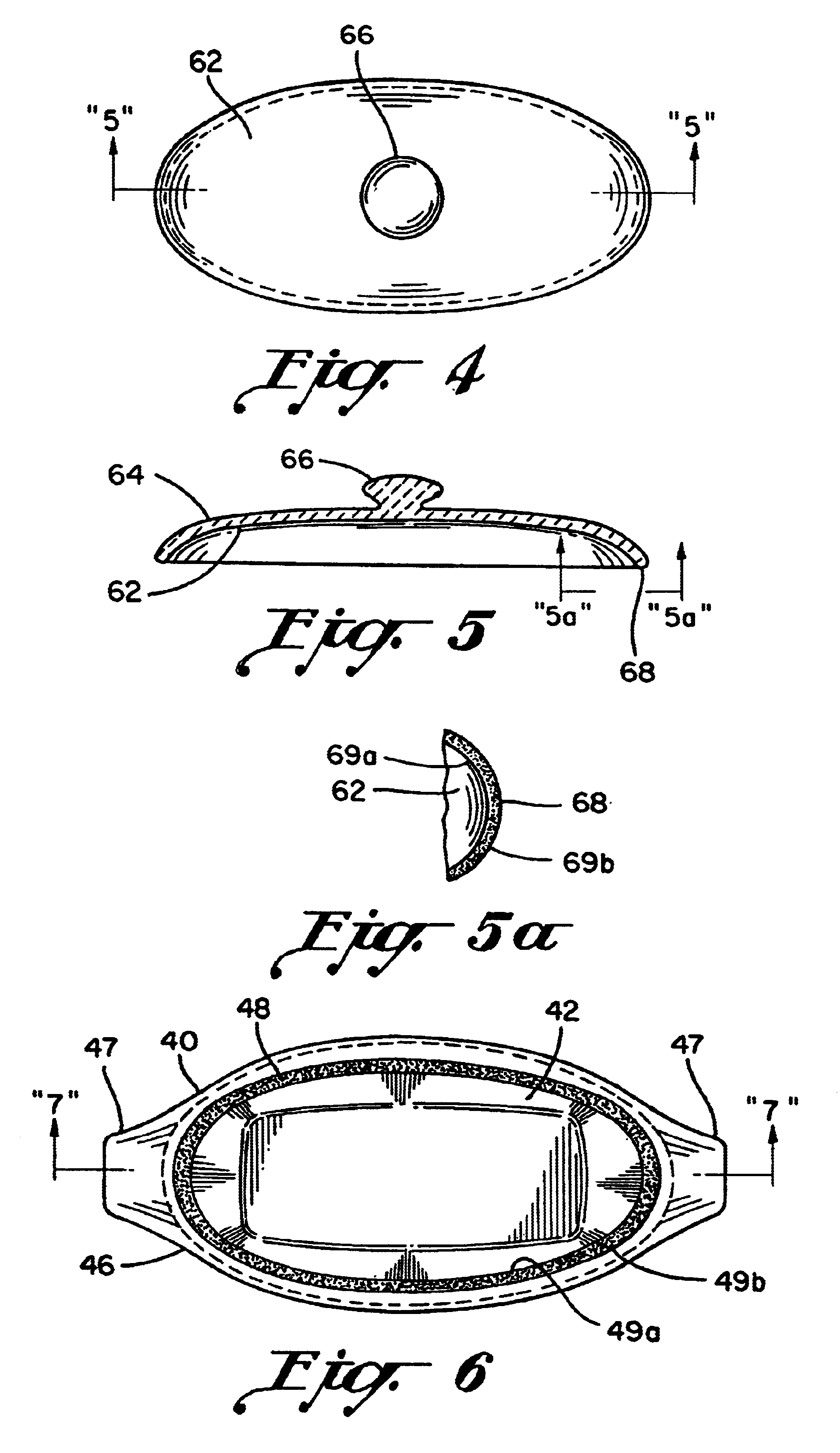Container assembly for maintaining container contents in a desired ambient temperature
a container and ambient temperature technology, applied in the field of container assembly, can solve the problems of unfavorable refrigerating of butter and the like, unfavorable refrigerating of inability to refrigerate melted or softened butter, etc., to achieve the effect of maximizing refrigeration or heating, minimizing unnecessary spillage, and improving the temperature-maintaining characteristics of the container assembly
- Summary
- Abstract
- Description
- Claims
- Application Information
AI Technical Summary
Benefits of technology
Problems solved by technology
Method used
Image
Examples
first alternative embodiment
[0064]A first alternative embodiment of the present invention concerns a container assembly 80 as perspectively illustrated in FIG. 11. Container assembly 80 is virtually identical to container assembly 10 save for having differently shaped primary components, namely, an outer bowl member 82, an inner vessel member 84 and lid member 86 all of which have a substantially circular, horizontal cross-section or circular shape when viewed from a top plan view. Outer bowl member 82 is thus illustrated in FIG. 16; inner vessel member 84 is thus illustrated in FIG. 14; and lid member 86 is thus illustrated in FIG. 12. Container assembly 80 is designed for placement of more voluminous quantities of temperature-controlled substance into the enclosed inner vessel member 84. In this last regard, it is contemplated that container assembly 80 is designed primarily for the placement of food or other substances, which are to be maintained in a heated ambient temperature. In this regard, container as...
second alternative embodiment
[0076]A second alternative embodiment of the present invention concerns a container assembly similar to container assemblies 10 and 80 save for the amount of glazing applied to inner bowl surface 22 and outer bowl surface 24. In the second alternative embodiment, an inner bowl surface 92 and an outer bowl surface 94 are left unglazed as is shown in FIG. 19. By leaving inner bowl surface 92 and outer bowl surface unglazed in varying extents (not illustrated) the manufacturer can tailor the container assemblage to cultural or situational norms. For example, a culture that is not heavily dependent upon refrigeration for its preservation needs, may desire a container assemblage with more breathability or porosity to increase the efficiency of the cooling / heating function of the container assemblage while downplaying the need for an aesthetically pleasing container assemblage, as is embodied in a somewhat thoroughly glazed assembly. It is thus contemplated that different consumers will d...
PUM
 Login to View More
Login to View More Abstract
Description
Claims
Application Information
 Login to View More
Login to View More - R&D
- Intellectual Property
- Life Sciences
- Materials
- Tech Scout
- Unparalleled Data Quality
- Higher Quality Content
- 60% Fewer Hallucinations
Browse by: Latest US Patents, China's latest patents, Technical Efficacy Thesaurus, Application Domain, Technology Topic, Popular Technical Reports.
© 2025 PatSnap. All rights reserved.Legal|Privacy policy|Modern Slavery Act Transparency Statement|Sitemap|About US| Contact US: help@patsnap.com



